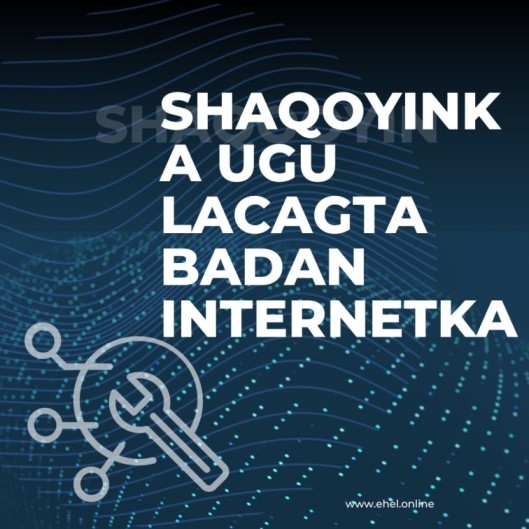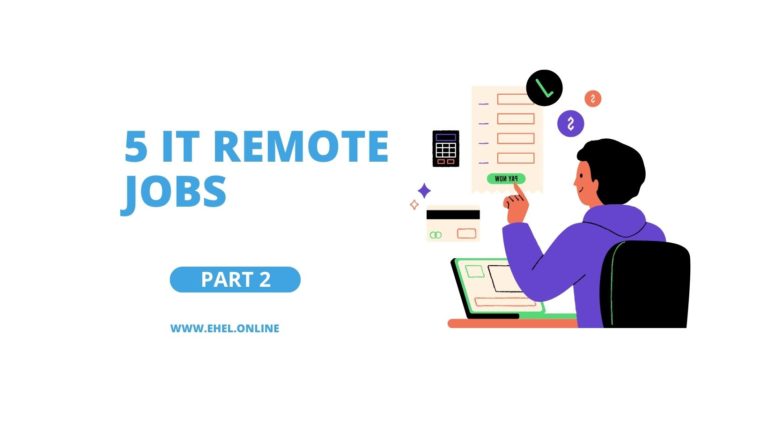Health-Tech Innovations: Wearable Devices and Telemedicine

- Wearable Devices: These are electronic devices worn on the body that collect and monitor various types of health-related data. These devices can include fitness trackers, smartwatches, and sensors that track physical activity, heart rate, sleep patterns, calorie consumption, and more. They are designed to help individuals manage their health proactively by providing real-time data and insights into their well-being. Wearable devices often use Bluetooth or Wi-Fi connectivity to sync data with smartphones or computers, enabling users to track their health metrics over time.
- Telemedicine: Telemedicine refers to the remote delivery of healthcare services and medical consultations using digital communication technologies. This can include video conferencing, mobile apps, and other telecommunications platforms that allow patients to consult with healthcare providers from a distance. Telemedicine enables individuals to receive medical advice, diagnoses, prescriptions, and even treatment plans without having to physically visit a healthcare facility. It enhances access to healthcare, particularly for individuals in remote or underserved areas, and provides convenience by eliminating the need for in-person visits for certain types of consultations.
Health-Tech Innovations, specifically in Wearable Devices and Telemedicine, have revolutionized healthcare by offering personalized health monitoring, improving accessibility to medical services, enhancing preventive care, facilitating early diagnosis, and empowering individuals to take an active role in managing their health. These innovations have seen significant advancements in technology, data accuracy, user experience, and integration with healthcare systems, contributing to the overall improvement of healthcare delivery and outcomes.
How to use Health-Tech Innovations: Wearable Devices and Telemedicine
Using Health-Tech Innovations such as Wearable Devices and Telemedicine involves several steps to maximize their benefits effectively:
Wearable Devices:
- Selection and Setup:
- Choose a wearable device that aligns with your health goals (e.g., fitness tracker, smartwatch).
- Follow the manufacturer’s instructions to set up and sync the device with your smartphone or computer.
- Wearing and Monitoring:
- Wear the device consistently as instructed by the manufacturer.
- Monitor your health metrics such as steps taken, heart rate, sleep patterns, etc., regularly through the device’s interface or accompanying app.
- Interpreting Data:
- Understand the data provided by the wearable device and interpret it in the context of your health goals.
- Look for patterns or trends in your data to make informed decisions about your lifestyle and health habits.
- Setting Goals and Tracking Progress:
- Set achievable goals based on the data insights (e.g., steps per day, sleep duration) and track your progress over time.
- Use the device’s features or apps to set reminders or receive notifications to stay motivated.
- Integration with Health Professionals:
- Share relevant data with healthcare professionals during check-ups or consultations for a comprehensive assessment of your health.
- Battery and Maintenance:
- Ensure the device is charged regularly as per the manufacturer’s recommendations.
- Follow maintenance guidelines to keep the device in optimal condition for accurate data tracking.
Telemedicine:
- Selecting a Telemedicine Platform:
- Choose a reliable and secure telemedicine platform or app that suits your healthcare needs.
- Setting up an Account:
- Create an account on the chosen telemedicine platform and provide necessary information.
- Scheduling Consultations:
- Schedule appointments with healthcare providers through the platform.
- Ensure a stable internet connection and a quiet, private space for the consultation.
- Preparing for the Consultation:
- Gather relevant medical records, notes, or questions you want to discuss with the healthcare provider.
- Be ready at the appointed time, and test your audio/video setup beforehand.
- During the Consultation:
- Communicate your symptoms, concerns, and medical history clearly to the healthcare provider.
- Ask questions and seek clarification about the diagnosis, treatment options, or prescriptions.
- Following Recommendations:
- Adhere to the healthcare provider’s recommendations, whether it involves medication, lifestyle changes, or follow-up appointments.
- Feedback and Review:
- Provide feedback on the telemedicine experience to help improve the service for future users.
- Review the effectiveness of the consultation and outcomes, and discuss any concerns with the provider if necessary.
Remember, while Health-Tech Innovations offer convenience and accessibility, they should complement, not replace, traditional healthcare. Regular communication and coordination with healthcare professionals are essential for comprehensive care and accurate interpretation of health data.
Tools of Health-Tech Innovations: Wearable Devices and Telemedicine
Health-Tech Innovations in Wearable Devices and Telemedicine leverage various tools and technologies to provide enhanced healthcare services. Here are some of the key tools associated with these innovations:
Wearable Devices:
- Fitness Trackers: Devices designed to monitor physical activity, steps taken, calories burned, and often include additional features like heart rate monitoring, GPS tracking, and sleep analysis.
- Smartwatches: Advanced watches with health tracking capabilities, such as heart rate monitoring, ECG (Electrocardiogram) measurement, sleep tracking, and integration with smartphone apps for notifications.
- Health Sensors: Specialized sensors (e.g., accelerometers, gyroscopes, photoplethysmography sensors) embedded in wearables to measure various health metrics like movement, heart rate, blood oxygen levels, and more.
- Biometric Devices: Devices that capture and analyze biometric data such as heart rate variability, skin temperature, sweat analysis, and more to provide insights into overall health.
- Mobile Apps: Companion applications linked with wearable devices to visualize and interpret health data, set goals, receive notifications, and track progress over time.
- Bluetooth/Wireless Connectivity: Technologies enabling wearables to sync data with smartphones, tablets, or computers, facilitating seamless transfer and analysis of health-related information.
- Cloud-Based Platforms: Platforms where collected health data from wearables is stored securely, allowing users and healthcare professionals to access and analyze the information from anywhere.
Telemedicine Tools:
- Telemedicine Platforms and Apps: Web-based or mobile applications that facilitate virtual consultations, allowing patients to connect with healthcare providers remotely through video conferencing or chat interfaces.
- Video Conferencing Tools: Software and platforms enabling real-time video and audio communication between patients and healthcare providers, offering a virtual face-to-face consultation experience.
- Remote Monitoring Devices: Devices that patients use at home to measure and transmit vital signs and health data (e.g., blood pressure monitors, glucometers, pulse oximeters) to healthcare providers for remote assessment.
- Electronic Health Records (EHR) Systems: Digital systems that securely store patient medical history, diagnosis, treatment plans, and other healthcare-related information accessible to authorized healthcare professionals.
- Secure Messaging and Communication Tools: Encrypted messaging platforms allowing secure communication between patients and healthcare providers, ensuring confidentiality of sensitive information.
- Data Analytics and AI: Utilization of artificial intelligence and data analytics to process and analyze vast amounts of healthcare data, providing insights into trends, patterns, and predictive analytics for personalized patient care.
- Prescription Management Platforms: Digital platforms allowing healthcare providers to electronically prescribe medications, reducing paperwork and facilitating faster prescription filling for patients.
- Patient Portals: Online interfaces enabling patients to access their health records, schedule appointments, view test results, and communicate with healthcare providers securely.
These tools collectively form the backbone of Health-Tech Innovations in Wearable Devices and Telemedicine, enabling more efficient healthcare delivery, personalized monitoring, and improved patient-provider communication while ensuring data security and privacy.
Top 7 Medical Innovations In 2023 – The Medical Futurist
The first time to use Health-Tech Innovations: Wearable Devices and TelemedicineChatGPT
The origins of Health-Tech Innovations in Wearable Devices and Telemedicine can be traced back to various moments in history, showcasing the gradual evolution and adoption of these technologies:
Early Instances and Milestones:
- Wearable Devices:
- 1970s-1980s: Early forms of wearable health devices emerged with inventions like the first wearable cardiac pacemaker.
- Late 20th Century: Researchers and inventors explored wearable technologies, including early prototypes for fitness tracking devices and portable heart rate monitors.
- Telemedicine:
- Late 19th Century: The advent of telecommunications began to play a role in medical consultations, particularly in remote areas where doctors advised patients via telephone or telegraph.
- 1950s-1960s: Experiments with telemedicine started to take shape, with projects like remote medical consultations via closed-circuit television in certain hospitals.
- 1970s-1980s: Telemedicine initiatives expanded with the use of satellite technology and video conferencing for medical consultations.
Modern Advancements:
- Wearable Devices:
- Early 2000s: Wearable fitness trackers and early iterations of smartwatches started to gain attention in the consumer market, offering basic health monitoring features.
- Mid-2010s: Technological advancements led to more sophisticated wearable devices equipped with advanced sensors, GPS, heart rate monitoring, and sleep tracking.
- Telemedicine:
- Late 20th Century to Early 21st Century: With the rise of the internet and advancements in digital communication technologies, telemedicine saw significant growth, enabling remote consultations and diagnostic support.
- 2010s to Present: The widespread availability of high-speed internet, coupled with advancements in video conferencing, mobile apps, and healthcare regulations, facilitated the widespread adoption of telemedicine services globally.
Current Landscape:
- Wearable Devices:
- Today: Wearable devices have become mainstream, offering an array of health monitoring capabilities, such as activity tracking, continuous heart rate monitoring, sleep analysis, stress tracking, and more. Companies continue to innovate, incorporating AI, machine learning, and improved sensor technologies.
- Telemedicine:
Present Day: Telemedicine has experienced a surge in adoption, particularly due to the COVID-19 pandemic, which highlighted the importance of remote healthcare delivery. Virtual consultations, remote patient monitoring, and telehealth platforms have become integral parts of healthcare systems worldwide.
The evolution of Health-Tech Innovations, especially in Wearable Devices and Telemedicine, has been a gradual process influenced by technological advancements, healthcare needs, and societal changes. These innovations continue to evolve, providing more personalized and accessible healthcare solutions to individuals globally.
Advantages of Health-Tech Innovations: Wearable Devices and Telemedicine
Health-Tech Innovations in Wearable Devices and Telemedicine offer numerous advantages that significantly impact healthcare delivery, patient outcomes, and overall well-being. Here are some key advantage
Wearable Devices:
- Continuous Health Monitoring: Wearable devices provide real-time tracking of vital health metrics such as heart rate, sleep patterns, physical activity, and more, enabling individuals to monitor their health consistently.
- Promotion of Active Lifestyles: These devices encourage users to adopt healthier habits by setting fitness goals, tracking progress, and providing motivation through feedback and reminders.
- Early Detection and Prevention: They facilitate early detection of potential health issues by identifying irregularities in vital signs, allowing individuals to take preventive actions and seek medical attention if necessary.
- Personalized Health Insights: Wearables collect personalized health data, providing insights into individual health patterns and behaviors, enabling users to make informed decisions about their lifestyle and health choices.
- Remote Patient Monitoring: Healthcare professionals can remotely monitor patients’ health conditions, improving chronic disease management, reducing hospital readmissions, and providing timely interventions.
- Improved Doctor-Patient Communication: Wearable device data can be shared with healthcare providers during consultations, enhancing communication, and aiding in more accurate diagnoses and treatment plans.
- Convenience and Accessibility: Users can access their health data anytime, anywhere, promoting convenience and allowing for a more proactive approach to healthcare management. The Emergence of 6G Technology
Telemedicine:
- Increased Access to Healthcare: Telemedicine breaks geographical barriers, providing access to medical consultations and specialized care, especially for individuals in remote or underserved areas.
- Convenience and Time-Saving: Patients can consult with healthcare professionals remotely, saving travel time and eliminating the need for physical visits to healthcare facilities, leading to increased efficiency.
- Continuity of Care: Telemedicine ensures continuity of care, allowing patients to receive follow-up consultations, medication management, and ongoing support from healthcare providers without disruptions.
- Reduced Healthcare Costs: By reducing the need for in-person visits and hospitalizations, telemedicine can lower healthcare expenses for both patients and healthcare systems.
- Emergency Consultations: Telemedicine enables quick access to medical advice in emergency situations, allowing timely intervention and guidance from healthcare professionals.
- Remote Monitoring and Management: Remote patient monitoring through telemedicine tools helps in tracking and managing chronic conditions, ensuring timely interventions and improved outcomes.
- Enhanced Healthcare Equity: Telemedicine promotes equitable access to healthcare services, bridging gaps in access to specialists and healthcare resources among diverse populations.
Overall, Health-Tech Innovations in Wearable Devices and Telemedicine offer transformative benefits by improving healthcare accessibility, empowering individuals to take control of their health, and facilitating more efficient and patient-centric healthcare delivery.
DHAMAAD
Hadii aad intaan soo gartay waad guulesatay, waxaan ku rajayna inaa maqaalkan/ article kan wax ka faidi doontid illah idinkiis, waxii su’aalo ah qeybta comment no ku reeb ama tobic aad jaceshahay inaa kaso hadalno Insha allah. THANK YOU YOUR VISIT.





